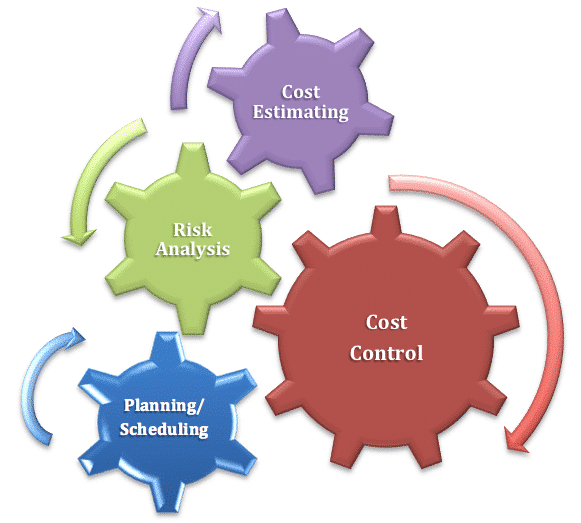Wouldn’t it be nice to have a fortuneteller in projects?
A fortuneteller of project who could predict what is going to happen in the project at any moment in the future?
Someone who could tell you how much more money and time you require to finish the journey of a project?
Can you guess who might be the fortuneteller of project? ……
The answer is….
A Project Controller is the fortuneteller of project!
Wait a second….
Project Controller?!!!… Who on earth a Project Controller is?
I am not surprised if you ask this question…
In fact, as a Project Control professional and trainer, I’ve been asked this question so many times. Usually the general public gets puzzled when they hear my job title; Project Control Specialist! So, I decided to write this blog post to help you better understand what “Project Controls” is all about and why you need such a fortuneteller in every project.
First let’s cover some grounds and understand what “Project Control” is.
What is Project Controls?
What does come to your mind when you hear the term “Project Controls”?
Project Controls consists of two simple words; Project + Controls. So, what does it imply?
- Does Project Controls mean controlling and managing people in the project and telling them what to do?
- Is Project Controls about controlling the quality of the project?
- Is Project Controls the same as Project Management?
The answer is a big fat NO.
So, if Project Controls is NOT managing the project resources, controlling the project quality, or directing a project in general (project management), then what is it?
What does Project Control actually control?
Basically, Project Controls defines and controls two main targets in a project:
- Cost: How much the project will cost and whether the project will finish on budget or not
- Schedule: How long the project will take and whether the project is going to complete on time or not
Cost and Schedule are the targets that were promised to meet at the beginning of the project; these are the two main objectives that a project controls function focuses on controlling.
“Cost” and “Schedule” are two main targets that a Project Controller focuses on controlling in a project.
But how a Project Controller controls the cost and schedule of a project?
How Does a Project Controller Control a Project?
Project Controls Starts with Project Initiation
There is a common misconception that Project Controls happens during the monitoring and controlling stage of the project. However, an effective Project Controls starts early on the project, when the project is initiated, and continues throughout the project life cycle until the project is closed out.
You might question “what does project controls have to do with the initiation stage of a project before even the project is awarded?!”

Well, what do you normally do at the project initiation? …. Putting together a proposal, right? In your proposal, don’t you need to estimate the ‘size’ of a proposed project?
Well, it is a no brainer that every proposal comes with a cost estimate and the time frame required to execute the project. So, we are talking about the “cost”, and “schedule” elements of a project. Isn’t it the role of a project controller to help the project team define these two main elements of the project?
After the project is awarded, Project Controls gets involved in “planning” the project.
Creating a detailed project plan is the first thing that a Project Controller does when undertaking any project.

To do proper planning, first the final destination in a project needs to be determined. The final destination in a project is the product or the things the project needs to deliver (known as deliverables) to meet the project goals.
Once the list of final deliverables is determined, the Project Controller gets heavily involved with the project team members to plan the journey to successful project completion. In the context of Project Controls, it is done by specifying how and when each deliverable needs to be delivered, what resources (labor, material, equipment, sub-contractor…) are required to execute the job, how much each resource and the overall project would cost, how the budget needs to be allocated, how the project performance is going to be measured, and much more.
The outcome of this compressive planning effort is an integrated project plan, known as “baseline”.
The project baseline acts like a roadmap that guides you to reach your final destination in the project. You will go back to this map constantly throughout your journey in the project, because at any moment on the project’s journey, you need to know where you are, when you will get to your final destination, and how much more money you need to finish your journey. Therefore, the project baseline is key for properly monitoring and controlling the project performance.
However, there is one problem, a big one….
Projects rarely go according to the plan.
The reality is that the road to project completion is filled with major changes and obstacles, which we as travelers on it need to be able to face and adapt to.

As stated earlier, the ultimate goal of a Project Controller is to make sure that the project reaches its final destination on time and within budget.
But how is it even possible when there are constant changes on a project?
Magic needs to happen…. You need a fortuneteller, don’t you?
Well, when the journey of a project starts, when the project enters the execution stage, the role of a Project Controller is to frequently measure and monitor the status of the project.
By monitoring the status of the project I mean evaluating where you are as compared to where you were supposed to be at any point on your project’s journey.
As with traffic signals on the roads that guide you to arrive safely to your destination, you need similar guideposts on your project’s journey to make sure your project is on the right track.
In fact, the mission of a project controller is to communicate such signposts effectively and warn you of any issues that might cost you extra time or money to reach your destination.
The project controller should not only tell you where you are on your project at any moment, but also should inform you how much more time or money you require to complete the project.
Remember the fortunetelling role of a Project Controller?!
A big role of a project controller is “forecasting” project final cost and schedule destination. In doing so, the project controller should help you minimize the deviation from your baseline plan so that you make sure your project is back on track …so that you can hit that end target; on time and within budget. And if not, take intelligent and meaningful proactive or corrective actions required to bring your project back on track as much as possible.
Are all these efforts done by a single project controller?
Yes and No. It depends on the size and complexity of a project.
For a small routine project, one or two project controllers might be able to handle the effort. However, in many cases a group of people in the Project Control department take control of various functions within a project.
Project Control Roles
The functions undertaken by project controls professionals typically cover 4 major areas:
- Planning/Scheduling,
- Cost Controls,
- Cost Estimating,
- and Cost and Schedule Risk Analysis.

So, people who are involved in Project Controls, the fortunetellers of a project, are either Planner/schedulers, cost controllers, cost estimators, or risk analysts and of course people who oversee all of those areas as Project Controls leads or managers. These are different roles in Project Control field that you would see.
Planner/Scheduler is responsible to develop the project schedule and monitor, control, and maintain the project schedule. The planner/schedule’s main goal is to develop a realistic and achievable plan for the project and minimize the deviation from the plan to ensure timely project completion.
On the cost side, Cost Controllers are responsible for developing and controlling the project’s budget. The goal of a cost controller is to minimize the deviation from the budget to ensure minimum overrun from the budget.
Cost Estimators develop a capital cost estimate for the project that outlines the required resources and cost for executing the scope of the entire project.
And finally, the cost and schedule risk analysts consider the risks involved in projects that mainly affect the cost and schedule. The cost risk analysts evaluate the project contingency while the schedule risk analyst determines the probability of achieving an end target date; they both evaluate the probability of achieving the plan developed for the project.
Now are you convinced that you need fortunetellers in your projects?
To learn how to do fortunetelling in projects, you need to develop your skills by taking some project control trainings. Project Control Academy will be pleased to assist you on your journey to excellence in Project Controls.
If you like this blog post, please share it. I also like to hear from you. Please leave your comments below. I will personally respond.
About the Author, Shohreh Ghorbani

Shohreh is a licensed project management professional (PMP) recognized by Project Management Institute (PMI) and holds a Master of Science in Industrial Engineering.
Connect with Shohreh via Facebook, LinkedIn, Instagram, YouTube





![[Free 90-min Masterclass] The Ultimate Leadership Recipe for Project Professionals](https://www.projectcontrolacademy.com/wp-content/uploads/2024/08/4-1024x576.jpg)















